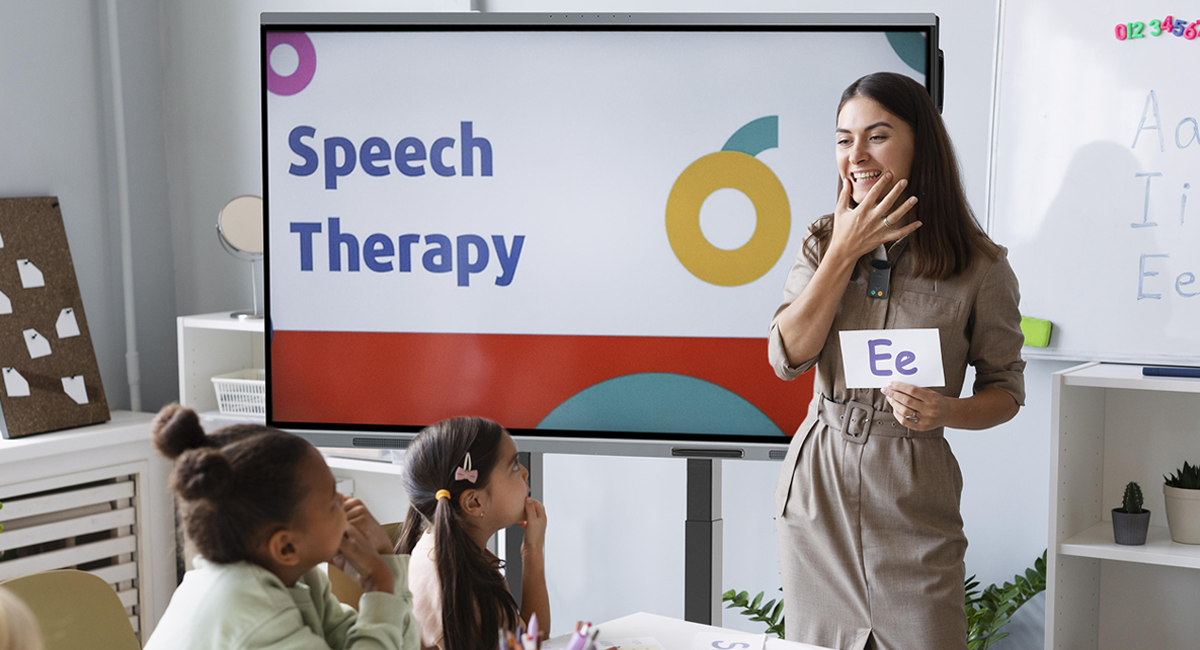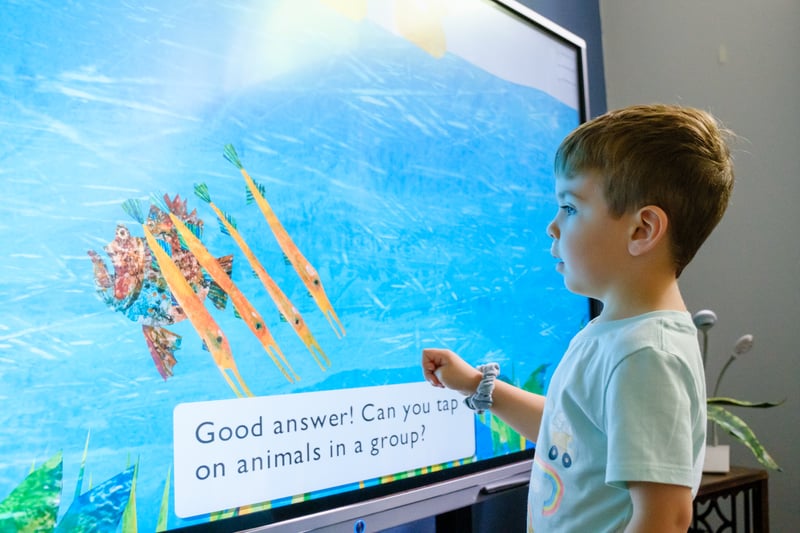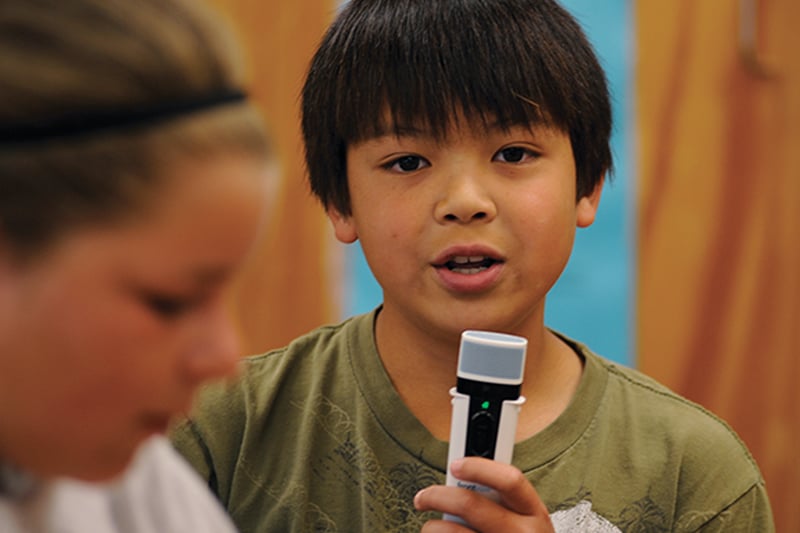
How can district and school decision makers help to transform teaching and learning with the technology choices they make? Decision makers play a crucial role in shaping the educational landscape by analyzing student data and teacher feedback, ensuring that innovative technologies are selected to support students in expanding their language skills. For instance, when it comes to vocabulary building for young children and English learners, interactive displays and classroom audio have proven to be invaluable tools that engage and invite active participation. By making thoughtful choices, decision makers contribute to creating vibrant and effective learning environments. Let’s explore how interactive displays and classroom audio can transform the educational landscape for both educators and students alike.
The Power of Interactive DisplaysInteractive displays (also called interactive flat panels, flat panels, touch displays) make learning more engaging and interactive and can be especially effective in vocabulary development for young learners and English learners. Here's how:
- Visual Engagement: Interactive displays captivate students with colorful visuals, making learning fun and exciting. For young children and English learners, the combination of images, text, and interactive elements helps reinforce vocabulary words effectively.
- Hands-On Learning: Interactivity allows students to actively participate in lessons. They can touch, drag, and manipulate elements on the screen, which not only aids in vocabulary retention but also develops fine motor skills.
- Multimodal Learning: Interactive displays support different learning styles. They combine text, images, audio, and video to cater to visual, auditory, and kinesthetic learners, ensuring that no student is left behind.
- Immediate Feedback: Teachers can use interactive displays to create quizzes, games, and interactive exercises. Immediate feedback helps students understand and correct their mistakes, fostering a deeper understanding of vocabulary concepts.
- Collaboration: Interactive displays promote collaboration among students. They can work together on group projects, brainstorm ideas, and use the technology to present their findings, all of which enhance vocabulary development and language skills.

Classroom audio systems, including teacher and student microphones, play a crucial role in vocabulary building. Here's how they make a difference:
- Clear Pronunciation: For English learners, hearing correct pronunciation is essential. A teacher microphone ensures that every student can hear clearly, aiding in pronunciation and understanding of new words.
- Active Participation: Student response systems allow students to answer questions, contribute to discussions, and interact with the class. This active engagement not only builds vocabulary but also boosts students' confidence in using the language.
- Repeated Exposure: Repetition is key to vocabulary acquisition. Classroom audio systems ensure that students hear and practice words multiple times during lessons, reinforcing their understanding and retention.
- Differentiated Instruction: With classroom audio, teachers can adapt their instruction to individual student needs. They can provide extra support or challenges, making vocabulary building a personalized experience.
- Inclusivity: Classroom audio benefits all students, including those with hearing impairments or attention difficulties. It creates an inclusive learning environment where every student has an equal opportunity to enhance their language skills.

To harness the full potential of interactive displays and classroom audio, it's crucial to integrate these technologies seamlessly into the curriculum. Here's how to do it effectively:
- Professional Development: Provide teachers with training and support to effectively use interactive displays and classroom audio. Familiarity with these tools is essential for creating engaging lessons.
- Curriculum Alignment: Ensure that the curriculum is designed to incorporate these technologies. Vocabulary building activities should be integrated into lessons to maximize learning opportunities.
- Student-Centered Approach: Encourage a student-centered approach to learning. Let students take the lead, explore, and create, using these tools to enhance their vocabulary skills.
- Continuous Assessment: Regularly assess the impact of interactive displays and classroom audio on vocabulary development. Collect feedback from both teachers and students to make necessary improvements.
- Accessibility: Ensure that all students, regardless of their abilities, can access and benefit from these technologies. Consider the needs of English learners and students with disabilities.

How can the seamless integration of interactive displays and classroom audio redefine the educational landscape, creating optimized learning experiences for both young learners and English language students?
In a kindergarten classroom, consistently using interactive displays can transform learning into an exciting adventure. Children will naturally respond to this immersive experience as they interact with the display, exploring letters, numbers, and words. The synergy of visuals and interactivity turns vocabulary building into play, resulting in improved language skills.
For English learners, the introduction of classroom audio can be a game-changer. A mic system will ensure clear communication for every student as well as provide a platform for students to actively engage in speaking and listening activities. The impact of implementing mics is significant leading to improved pronunciation and language skills over time. The powerful combination of interactive displays and classroom audio not only caters to the needs of educators but also enhances the overall educational experience for students.
Looking Ahead
As we look to the future of education, the integration of interactive displays and classroom audio systems will continue to evolve. New developments, such as virtual reality and augmented reality, are on the horizon, promising even more immersive and engaging learning experiences.
The use of interactive displays and classroom audio is transforming classrooms into dynamic, interactive environments where vocabulary development for young children and English learners is optimized. By integrating these innovative technologies effectively and keeping a student-centered approach, educators can foster a love for language and ensure that students have the tools they need to succeed in a multilingual world.

Explore dynamic solutions that enrich and enhance the teaching and learning experience: www.boxlight.com.

.png)
